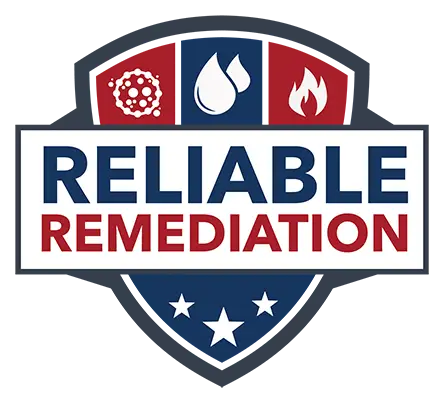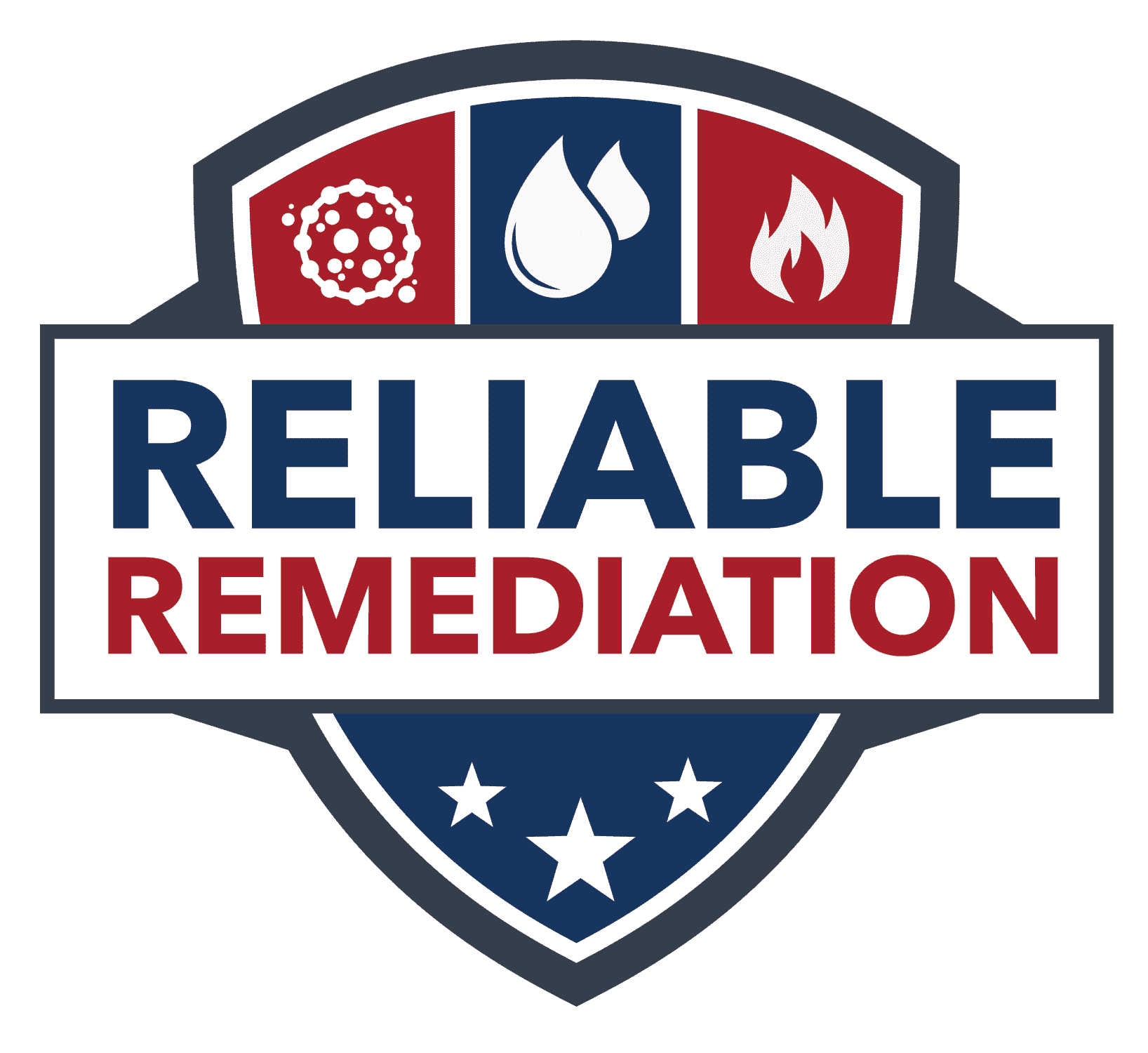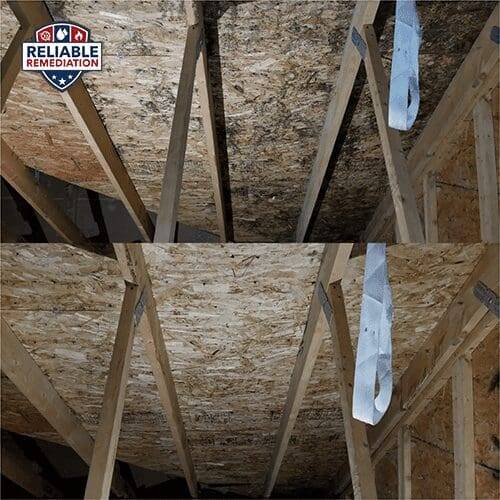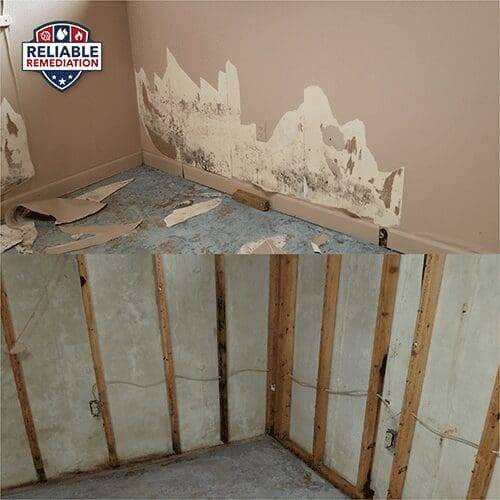Reclaim Peace of Mind
Restore Your Property
Renew Your Health
Have you found mold somewhere you didn’t expect it?
The most important part of a home is the people inside it.
You shouldn’t have to live in fear of your home making you sick.
Breathe easier knowing your mold problem is solved.
Mold is always a moisture problem. At Reliable Remediation, we’ll get to the root of it so you can say goodbye to mold for good.

Identify the root problem so it can be resolved.

Clean and remove the mold – no fogging or “spray and pray”.

Make your home healthy and safe again.
Learn More About Mold…and Fixing it the Right Way
What’s the deal with mold?
Molds are a group of tiny organisms that are a member of the fungus family. They generally reproduce by means of spores (similar to seeds) and are found everywhere – in both indoor and outdoor environments. While molds are an essential part of the ecosystem that break down organic material and can be beneficial, under certain conditions, some molds can be allergenic, infectious, or toxic to humans and other animals. Growth and spread of mold and mildew in indoor environments (buildings) are typically caused by water intrusion and/or elevated moisture/humidity levels. This can cause a breakdown in building materials and may present unique health risks to inhabitants, e.g. sinus and respiratory issues are among the most common.
The mold removal process usually includes utilizing containment (to avoid cross-contamination) and the use of specialty equipment like HEPA-filtered air scrubbers and vacuums. Some materials may be sanitized (or cleaned in place) but damaged or wet building materials most likely will need to be removed and some materials may need to be dried to avoid future growth.
Common places to find mold growth:
- Bathrooms
- Under the kitchen sink
- Basements
- Attics
- Closets
Common causes of mold growth:
- Leaky roofs
- Flooding
- Pipe Leaks
- Shower/bath steam
- Humidifiers
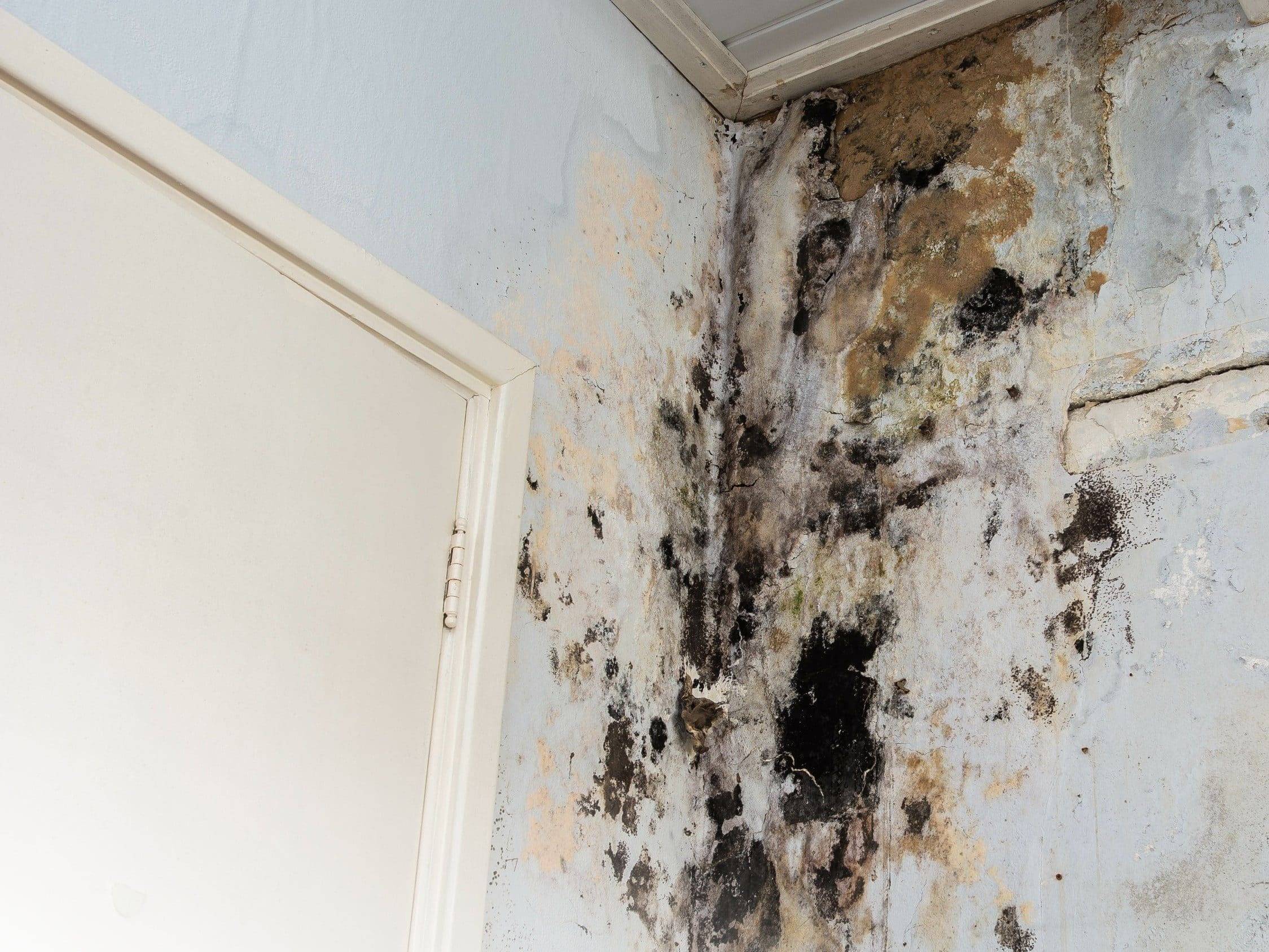
Make sure you get mold remediated properly.
The National Standard for Mold Remediation physical removal and addressing the moisture source. Many remediators will just mist or fog disinfectants or sanitizers in an attempt to “kill” mold in lieu of source removal. Attempts to “kill” mold in lieu of physical removal disregard the fact that the body cannot tell the difference between LIVE and DEAD mold, spores, and hyphal fragments. If not removed, it can put property owners and future occupants at risk. Property owners will have to assume responsibility and occupants with allergies or sensitivities may STILL BE AFFECTED.
The National Standard for mold removal was developed by the Institute of Inspection, Cleaning, and Restoration Certification (IICRC) in conjunction with experts in building science, professional mold assessors, certified remediation professionals, and indoor environmental professionals.
Make sure you choose a company that follows the national standards of care.
Where Does Mold Hide?
As they say, mold is ubiquitous, meaning it is found everywhere — or I should say, mold hides everywhere, sometimes in plain sight, but unseen. When we come in from outside, mold spores follow. When we open the window for fresh air, mold spores float right in. Even in commercial environments where fresh air make-up brings air into the air conditioning system, mold spores are an inevitable uninvited guest.
Given the right temperature, moisture or humidity level, and food source, these mold spores begin to grow, causing the indoor environment to smell musty. If you can smell mold, you can be sure that it is growing somewhere even if you don’t know where. Since some people can be highly allergic to mold, it’s important to know how to reduce contamination levels.
Four Often Overlooked Areas
- Mold hides in places that you can’t reach. Every horizontal surface receives mold spores that have settled out. If there is dust on a surface, it probably contains mold spores, but regular, thorough cleaning will reduce the possibility of mold growth. Focus especially on the higher areas that are hard to reach, like crown moldings, door jambs, kitchen cabinets, and bookcases.
- Mold hides in places that you can’t see. That dark closet full of winter clothes or a storage space full of boxes is great places for mold to grow. I spoke with an elderly woman the other day who pulls out her refrigerator every week to clean behind it because she is so concerned about mold growing back there. Just because you can’t see it doesn’t mean it’s not a great incubator for mold.
- Mold hides wherever it is wet. There are places around homes and buildings that hold water that you may never have thought about. Refrigerators and freezers have a shallow pan underneath the motor that may have water in it. A small undetected leak on the icemaker line or at the shut-off valve under a sink might produce enough water to help mold grow. Have you checked the washing machine connection lately to make sure it is tight and not dripping?
- Mold hides where there is poor air circulation. Behind dressers or filing cabinets jammed up against walls, in utility closets overflowing with boxes, and in closets that have no ventilation, mold is more likely to grow. Periodically check these areas to reduce the possibility that mold contamination will proliferate.
Mold is so ubiquitous that its presence in homes and buildings is inevitable. Add these four areas to your regular cleaning routines, and you’ll find the mold where it hides. When you do find mold, address it immediately and seek professional assistance for a cleaner and healthier indoor environment.
Disaster Happens. We can FIX it!
Previous based on an article by Doug Hoffman, CEO of the National Organization of Remediators and Mold Inspectors (NORMI)
Will Dead Mold Hurt Me?
People often ask, “Will ‘dead mold’ hurt me?” This is a great question because there are some processes in the marketplace that make claims about killing mold “in place” and suggest that the resulting mold debris does not need to be removed. This is incorrect.
Most often, this position is taken by “mold” companies that utilize a style of fogging or airless spraying that delivers chemicals to the surface and claim to be able to access mold wherever it is and kill it, either under pressure or not. The assumption is made that once the mold is killed, it does not need to be removed. This process is cheaper and faster than traditional mold removal. Though cheaper and faster isn’t necessarily effective. In this case, it isn’t effective unless the process also includes removing the mold debris from the surfaces and air.
For many years, people have been tested by doctors for allergies and, through the testing process, find they are allergic to mold. The process is called “prick-testing,” and in it, a mold spore is injected just under the skin, and if the patient reacts to mold with a rash or itching, it is determined that he or she is sensitive to mold and probably has developed, or will develop mold allergies.
The spore in allergy testing is a dead, not viable, mold spore. What that simply means is that people react to mold whether it is dead or alive. So, why would you want to leave dead mold in place?
The Industrial Hygiene Field Operations Manual (IHFOM) produced a mold-removal guideline document for the Navy, which says “killing mold is not sufficient because residual biomass can still elicit allergenic responses from sensitive individuals [and] mold must be removed.”
The IICRC emphasizes that even dead mold remains toxigenic and allergic. Further, research has shown that the mycotoxins (mold poisons) produced by some molds are being produced on the surface of the spore and continue to move into the air even if the mold is non-viable (dead). Why would you want to leave the debris?
Mold, when dead, can also become a food source for other microbes. And, if it becomes aerosolized (suspended in air), it can become problematic for the person who is sensitive to molds. Many clients who seek information about mold are already sensitive to environmental issues, so why would you leave a potential allergen in the environment? You wouldn’t.
Disaster Happens. We can FIX it!
It’s Easy to Get the Help You Need

Get an Evaluation

Receive a Customized Plan

Restore the Health of Your Home
Mold Removal Case Studies
Your Mold Questions Answered
What is mold?
Molds are part of the natural environment. Outdoors, molds play a part in nature by breaking down dead organic matter such as fallen leaves and dead trees, but indoors, mold growth should be avoided. Molds reproduce by means of tiny spores; the spores are invisible to the naked eye and float through outdoor and indoor air. Mold may begin growing indoors when mold spores land on surfaces that are wet. There are many types of mold, and none of them will grow without water or moisture.
How much does mold remediation cost?
There are many factors of mold growth and mold removal that affect the overall cost of remediation, including the location and type of the mold, the size of the problem, and the kind of remediation that is necessary. Check out our pricing page for more information.
Is mold remediation covered by insurance?
It depends. If you have a significant mold problem, typically, your insurance will not cover it. Mold takes time to develop, and many insurance carriers believe that if you are maintaining your property, you should catch any mold issues in their infancy and normally they are happy to come to the rescue in those cases. An example would be, you leave for a two-week vacation and when you return you find that the water heater leaked and you have some mold starting to grow on the walls – that should be covered. But, if you own a home with a leaky roof and windows, and after several years of ignoring the problem, you decide to file a claim and ask for full mold remediation including all new windows and replace the roof, you are probably out of luck – your insurance would likely cite poor maintenance and neglect. Some national insurance carriers have excluded mold from coverage altogether.
Did you know that the state of Connecticut requires homeowner’s policies to cover hidden mold for up to $10,000?
There are exceptions for problems that were ignored or are a result of deferred maintenance.
Is black mold toxic?
There are over 100,000 species of mold and more than 20,000 are black in color. This is why we don’t identify mold by the color – we identify mold through testing. Just because mold is black does not mean it is toxic. So then, what about toxic mold…
…Stachybotrys Chartarum. Sounds ominous, doesn’t it? Stachybotrys is a greenish-black toxic mold that grows particularly well in high-cellulose material such as straw, hay, wet leaves, drywall, carpet, wallpaper, fiber-board, ceiling tiles, thermal insulation, etc. Before drying, Stachybotrys is wet and slightly slimy to touch. The toxic mold grows in areas where the relative humidity is above 55% and needs a constant water source in order to thrive. This type of mold is thought to be a possible cause of the “sick building syndrome” and a multitude of “building-related illnesses”. Children’s exposure to this mold is thought most likely to cause pulmonary hemosiderosis (bleeding in the lungs).
Can mold cause health problems?
Molds are usually not a problem indoors unless mold spores land on a wet or damp spot and begin growing. Molds have the potential to cause health problems. Molds produce allergens (substances that can cause allergic reactions), irritants, and in some cases, potentially toxic substances (mycotoxins). Inhaling or touching mold or mold spores may cause allergic reactions in sensitive individuals. Allergic responses include hay fever-type symptoms, such as sneezing, runny nose, red eyes, and skin rash (dermatitis).
Allergic reactions to mold are common. They can be immediate or delayed. Molds can also cause asthma attacks in people with asthma who are allergic to mold. In addition, mold exposure can irritate the eyes, skin, nose, throat, and lungs of both mold-allergic and non-allergic people. Symptoms other than the allergic and irritant types are not commonly reported as a result of inhaling mold. Research on mold and its health effects is ongoing.
Can I take care of mold myself?
If you are dealing with a small area that does not require professional remediation, maybe you can clean up your own mold problem. Professional cleaners or remediators may use methods and products not available to consumers. Mold may cause staining and cosmetic damage. It may not be possible to clean an item so that its original appearance is restored.
Tips and Techniques for Mold Removal
- Fix plumbing leaks and other water problems as soon as possible. Dry all items completely.
- Scrub mold off hard surfaces with detergent and water, and dry completely.
- Absorbent or porous materials, such as ceiling tiles and carpet, may have to be thrown away if they become moldy. Mold can grow on or fill in the empty spaces and crevices of porous materials, so the mold may be difficult or impossible to remove completely.
- Avoid exposing yourself or others to mold. Do not paint or caulk moldy surfaces. Clean up the mold and dry the surfaces before painting. Paint applied over moldy surfaces is likely to peel.
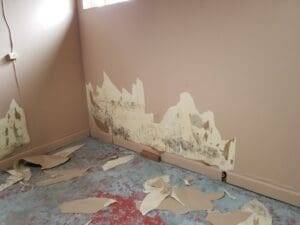
- If you are unsure about how to clean an item, or if the item is expensive or of sentimental value, you may wish to consult a specialist. Specialists in furniture repair, restoration, painting, art restoration and conservation, carpet and rug cleaning, water damage, and fire or water restoration are commonly listed in phone books. Be sure to ask for and check references. Look for specialists who are affiliated with professional organizations.
If the project is more than a few square feet or you are hesitant to try it on your own, remember that Professional Remediators:
- Use moisture sensors and specialized equipment to ensure items and materials are completely dry;
- Have access and experience in using biocides, antimicrobial solutions, and botanical cleaning products that might not be readily available to consumers;
- We are trained and certified to recognize what can be salvaged and what should be replaced; and,
- Use containment, pressure differential, and specialty equipment like HEPA filtered vacuums and air scrubbers to prevent exposure and cross-contamination.
How do I control the spread of mold?
Moisture is the number one enemy of every structure and mold is always a moisture problem. You must completely fix the water or moisture problem, perform or have a professional perform the mold removal. After completion, visible mold and moldy odors should not be present (note that mold may cause staining and cosmetic damage). Revisit the site/area shortly after cleanup and it should show no signs of water damage or mold growth. It is beneficial to monitor the area in the future as well to catch any future problems before they get too bad.
If I find mold, should I have it tested?
In most cases, if visible mold growth is present, sampling is unnecessary. Since no EPA or other federal limits have been set for mold or mold spores, sampling cannot be used to check a building’s compliance with federal mold standards. Surface sampling may be useful to determine if an area has been adequately cleaned or remediated and should be compared to samples taken before the project is begun.
Testing may be important if a medical doctor confirms and identifies certain molds that are affecting an occupant’s health. Testing can substantiate either the presence of these certain molds or if they are not present in the indoor environment.
If someone’s health IS being affected by the presence of mold in the indoor environment, property owners should consider hiring an indoor environmental professional like a Certified Industrial Hygienist. We know and work with some great one’s and can make that referral.
What's the big deal with mold?
Do you remember the lawsuits and hysteria surrounding the mold problems of Erin Brockovich, the Ballards in Texas, and even Ed McMahon with his sheepdog, Muffin?
“Black Mold” was called the “next asbestos” — and the media frenzy was on. But today, we just don’t hear very much about mold, do we? Did it go away? Is it no longer a problem? Have we now decided that it won’t kill us and that it is safe?
In the 1980s, our building techniques changed. At that time, the driving force was a concern over increasing energy costs and so, as a result, we tightened up our buildings to reduce energy loss. Weather-stripping was a hot commodity and lowering the thermostat became the new status symbol of the energy conservationist. The unintended consequence of these tighter buildings was to create petri dishes where indoor air quality contaminants, like mold and bacteria, would have an environment in which to proliferate. Trapped air became toxic air. SBS (Sick Building Syndrome) and BRI (Building Related Illness) were some of the first indicators that we had a problem and then, before we could turn around, it became a legal issue. Those who were especially sensitive to mold issues, like the Ballards, McMahon, et al, became the focal point of the media.
Yes, some people still get very sick from mold, but I believe what we have found is that the numbers are significantly lower than we first believed, and, therefore, the hysteria has subsided.
But, is mold safe now?
Well, with that said, we shouldn’t ignore the fact that people still get very sick from mold contamination and that some people, maybe a smaller group than we first thought, are highly sensitive to many IAQ contaminants, including mold.
It’s not that mold has become safer, it’s that the instances of serious health problems are being more reasonably dealt with. Doctors, like members of the AAEM (American Association of Environmental Medicine), are becoming more aware of potential environmental issues. The mold industry is being more careful and better trained to evaluate and deal with these issues. States are now licensing mold professionals to be sure they are following best practices and credible trade associations, like NORMI™, are being formed to support those professionals.
Professional assessors and remediators recognize that three classes are especially susceptible to health problems because of mold: The elderly, the very young, and the immune-suppressed. Care should be taken to understand the reality of the symptoms associated with mold contamination and the proper techniques for building isolation containment, establishing negative pressure, and using PPE (personal protective equipment). These processes can protect even the most sensitive individuals and should be incorporated where building occupants or workers may be exposed to elevated levels of mold contamination.
In short, the mold industry has experienced the same progression as the asbestos industry did years ago. Initially, asbestos was considered “deadly” and removal, or abatement, seemed to be the only option. Later, as more information became available, encapsulation-in-place became an option, deemed more reasonable and cost-effective. As a result, asbestos hysteria subsided.
Unlike asbestos, mold is a natural substance that only becomes a problem when it is trapped in a welcoming indoor environment. Control the environment with the proper sanitization protocol and you can control or eliminate mold growth. When that is done, most people can live in that clean environment without concerns for their health or the health of their families.
The more we learn about how to live healthier lives indoors, the safer those environments become.
Disaster Happens. We can FIX it!
Previous based on an article by Doug Hoffman, CEO of the National Organization of Remediators and Mold Inspectors (NORMI)
